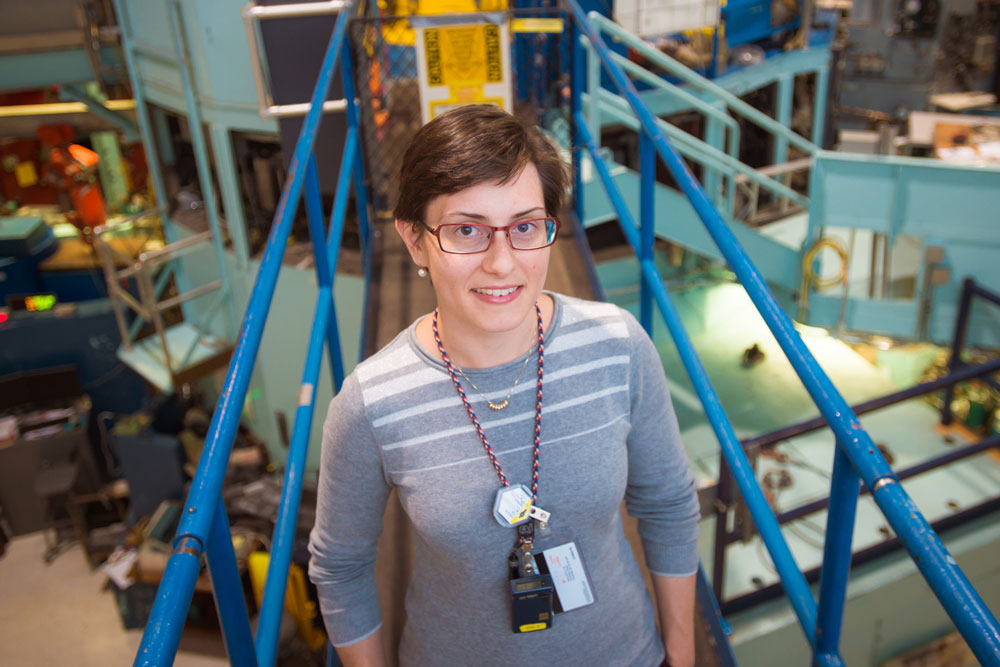Sarah Don: Building connections

Although NSE alumna Sarah Don (SB, SM ’14) says she never expected to land in a management role, she did just that a couple of years ago when she became assistant superintendent of the MIT Reactor and was promoted to superintendent last year.
“The MIT Reactor kick-started my career in nuclear engineering,” says Don. “This role was a wonderful opportunity that came up a couple of years ago, and I've really embraced it.”
In the demanding, multi-faceted position of superintendent — which involves a lot of planning and communication, as well as physics and engineering skills — Don leads a team of reactor operators and support staff “who are dedicated to maintaining a robust safety culture and a reliable, world-class experimental facility.” She is responsible for regulatory compliance and helping to mentor student operators, as well as prioritizing the reactor’s maintenance activities. Her work often requires balancing schedule expectations — such as irradiating a sample by a certain time — with very high safety standards.
“I care a lot about the staff who work here and their safety,” says Don, “so I have to make sure we do things the right way — the safe way—100% of the time. We have a highly skilled and experienced team, and we’re proud of the way we work efficiently and safely to keep the reactor running to support education and research.”
Don’s work supports one of the Nuclear Reactor Lab’s (NRL) missions to expand its outreach throughout the MIT community, helping MIT students, faculty, and research staff — including those outside of NSE — to learn more about how the reactor works and how it might enhance their own research efforts. She says that one of her goals as superintendent “is to facilitate as much connection as possible between the reactor and lab courses and the student population on campus.” She reaches out to MIT classes who might be able to use the reactor for supervised, educational experiences. Likewise, the new NRL Seed Program aims to enable more MIT faculty and research staff to utilize the reactor for their research. Additionally, the NRL offers UROP and thesis research opportunities.
Don’s pathway to nuclear science started early — before she was even admitted as an MIT undergraduate. She participated in the Research Science Institute, a science and engineering summer program for high school students, and was placed with Michael Driscoll, now professor emeritus of NSE.
“Learning about reactor physics and neutronics codes with Professor Driscoll was a very positive research experience for me,” says Don, “It got me interested in nuclear engineering — and also introduced me to the reactor and the idea that I could be a reactor operator.”
Once at MIT, she pursued that goal and embarked upon the very rigorous reactor operator training, which takes place over several months and requires an excellent memory, strong attention to detail, and an understanding of mechanical systems.
“The attention to detail required to be a reactor operator and the sense of responsibility appealed to me,” says Don, “as well as the research that we do here.”
Trainees start by reading materials provided by the NRL to learn how the reactor is built and how it works, what is going on inside the reactor core, and how the reactor responds to operator interaction and various outside conditions. Once they have a solid understanding of all of this, trainees operate the reactor under the supervision of the training supervisor. After completing the requirements for the training program, they take the license exam, administered by the Nuclear Regulatory Commission. An examiner comes to MIT and spends several hours with each candidate for an in-depth interview portion and walk-through of the facility designed to test candidates’ knowledge of the reactor. All of this is followed by a written exam
Don says that the mostly “hands-on” nature of the training was tremendously valuable, helping her to gain experience and “fundamental understanding” of how mechanical systems work, how nuclear reactors work, and how people interact with systems and controls.
“I believe that training to be a reactor operator was a valuable hands-on experience that complemented and enhanced my understanding of the NSE course material,” says Don. “It's wonderful to now be able to mentor our current student operators, knowing that they are gaining unique experience while becoming valuable members of the reactor operations team.”
Don seeks to build interest in the reactor beyond the MIT community, as well — including to high school students worldwide — through content on the NRL website. She recently helped to create some new videos that provide a glimpse into what an operator does and some examples of experiments that can be done with reactor.
RELATED
- Becky Romatoski: Reducing risk in next-generation reactors
- Sara Hauptman: Learning on the job
- David Carpenter: Purpose-driven to the core
- NRL
Written by Stefanie Koperniak. Photo by Gretchen Ertl.
October 2017
